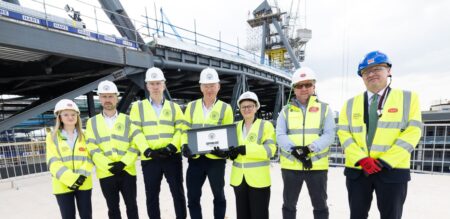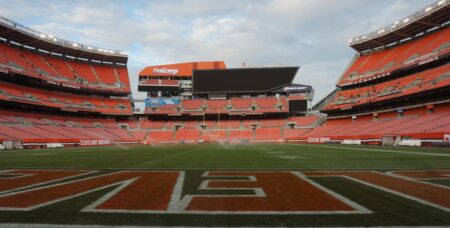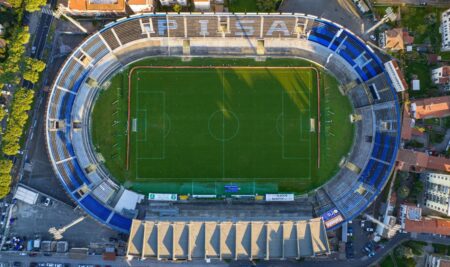Work has commenced on a redevelopment project for Dresden’s historic Heinz-Steyer-Stadion that aims to ensure it retains its position as one of Germany’s key athletics venues, while also adding multi-purpose value.
First opened in 1919, the stadium has been the setting for 18 world records in athletics over the years, albeit only one since 1986, and that in 2015. It was also the first home of Dynamo Dresden football club, and moving forward will also host football matches, along with the Dresden Monarchs American football team.
In September 2018, Dresden City Council decided to renovate and expand Heinz-Steyer-Stadion, with a tender process launched and a general contractor ultimately chosen on January 28 this year. Dresden’s Mayor, Dirk Hilbert, officially signalled the start of work on the site yesterday (Tuesday) with completion planned for September 2023.
With a total cost of around €37.3m (£31.5m/$43.2m), the renovation and expansion of the City-owned Heinz-Steyer-Stadion is one of the largest municipal building projects in sports in the local region since 1990, excluding aquatic sports facilities. The Free State of Saxony is funding the construction project with €4m, and is also providing around €770,000 in funding for the professional disposal of contaminated building rubble.

The project has been developed by ARGE BAM Sports and O+M Architekten. After completion, it is envisioned that Heinz-Steyer-Stadion will be one of the few stadia in Germany that meets the requirements for national and international athletics championships.
The stadium will have 5,000 permanent covered seats. The stadium capacity will be able to be temporarily expanded to up to 15,000 using mobile grandstands for major events.
The heart of the stadium is the multifunctional south stand. In this approximately 140-metre-long structure, a new fencing hall, sports rooms, squash courts and a multifunctional area for sports and education are being built on four floors. The roof will have a photovoltaic system.
Outside of the stadium, a sports hotel, roller skating facility and ice skating rink are set to be added, with further long-term plans for expansion of the five-hectare Grüner Sportpark Ostra area.
According to German newspaper Bild, a downhill ski slope and bobsleigh run will be added, along with a canoeing centre and open-air swimming pool. Completion of the entire sports park is planned for 2030.
Images: ARGE BAM Sports GmbH / BAM Deutschland AG, O + M ARCHITEKTEN





